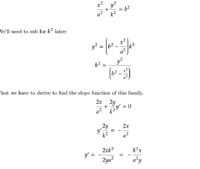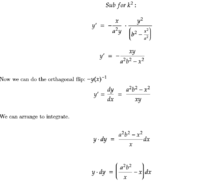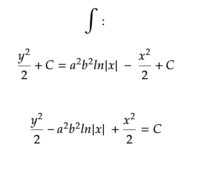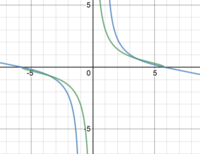PunkLuncheon
New member
- Joined
- Oct 24, 2020
- Messages
- 3
CAL 2 here. Bear with me, first time posting.
The question is essentially: We choose arbitrary integers between 1 & 9 for a and b. Then find the family of equations which intersect orthogonally with this family of functions (the first line).



When I graph it it looks good at first glance. But for certain values (a,b,k) it's clearly off. I've gone over it multiple times.
If you see anything and can give me any hints I would appreciate it a lot!
The question is essentially: We choose arbitrary integers between 1 & 9 for a and b. Then find the family of equations which intersect orthogonally with this family of functions (the first line).



When I graph it it looks good at first glance. But for certain values (a,b,k) it's clearly off. I've gone over it multiple times.
If you see anything and can give me any hints I would appreciate it a lot!

